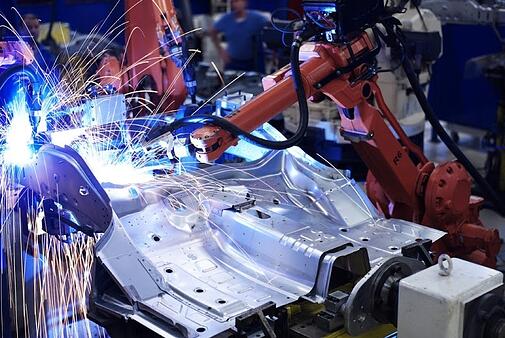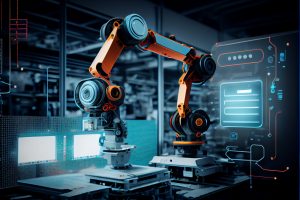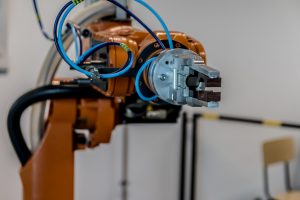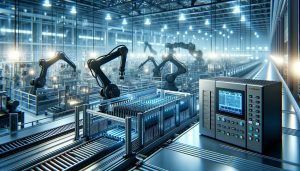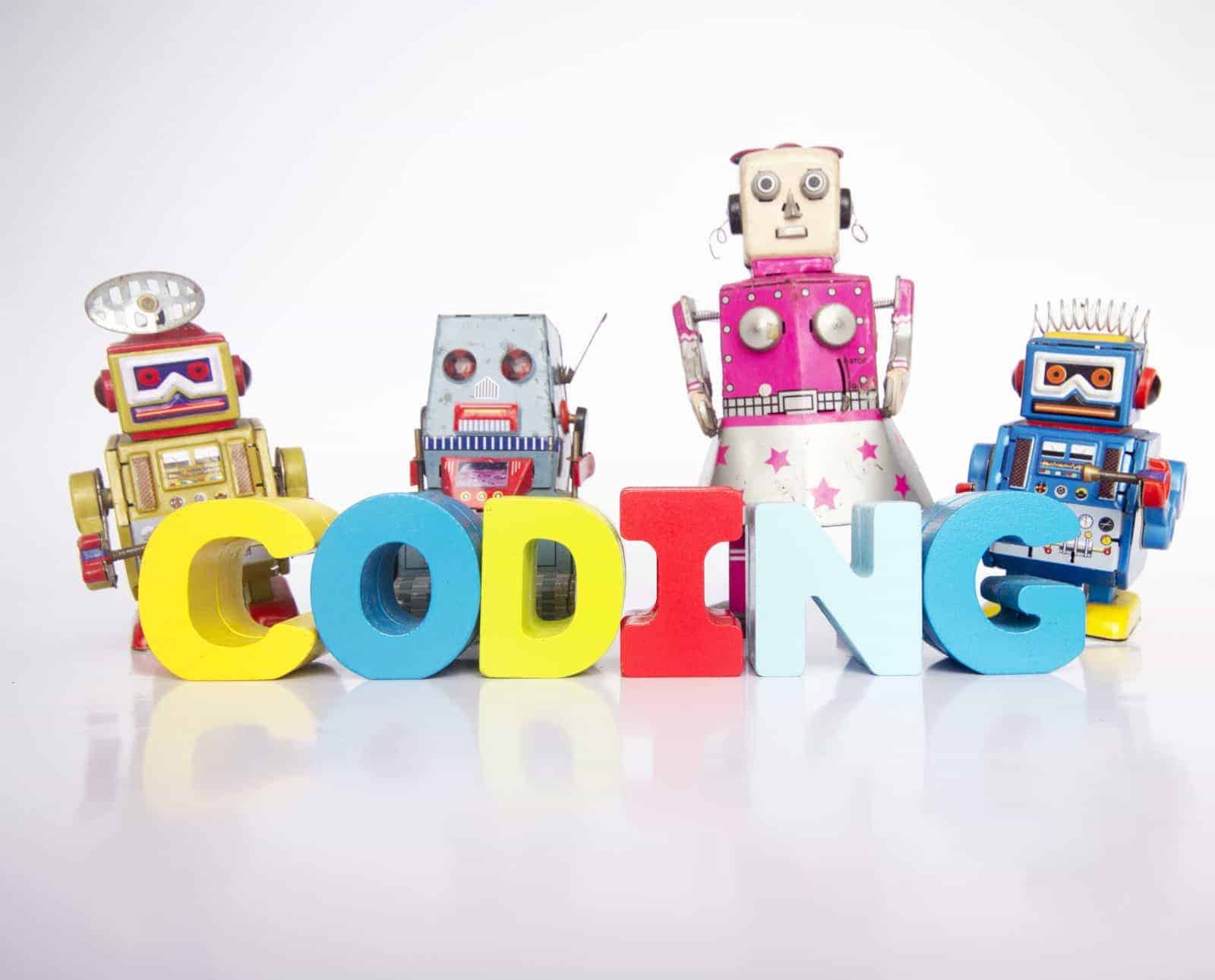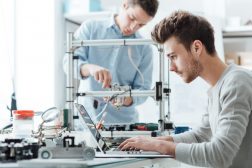The use of robotics within the manufacturing sector is gaining traction. Factory robots have taken over most tasks that require a greater level of precision, increased speed, and patience. Earlier production robots were not smart enough. Moreover, they lack autonomy and were unable to function freely without human intervention. They were created to carry out monotonous tasks in a properly-controlled setting.
In modern times, a microprocessor was used to regulate robotic manufacturing systems. Modern factory robots are more flexible, smarter, autonomous, and can function to a greater degree without human intervention.
Production Robots In Manufacturing
Robot manufacturing has been accelerating the production process. This results in smarter and cheaper fundamental production processes. A recent report from PwC shows that 59 percent of companies in the manufacturing industry are presently utilizing at least one type of production robot.
At Fanuc plant in Japan, for instance, factory robots manufacture fellow robots under the supervision of four workers every shift. In the Netherlands, Philips, a plant that produces electric razors employs more robots than human workers by a ratio of roughly 14 is to 1. Another example, the camera producer, Canon, started reducing the need for human intervention at many of its factories in 2013.
Robotic manufacturing systems, where production tasks and flow of material are managed completely robotically, is a common feature of modern-day manufacturing.
Perhaps humans are gravitating towards robot manufacturing because of the following factors: to protect the human workforce from filthy, monotonous, or risky tasks; to enhance quality by preventing mistakes and minimizing inconsistency; to lower the cost of production.


Robotic Processing Automation (RPA)
Nonetheless, the development of robotics technology, such as Robotic Processing Automation (RPA), is yet another milestone in the transformation of the manufacturing industry. Furthermore, this would accelerate the production process and make robotic manufacturing systems better.


Uses Of Robots In Manufacturing Tasks
Handling Of Materials
The use of factory robots in material-handling involves the transfer of material, loading, and unloading of the machine. When performing material transfer tasks, production robots move materials or parts of a machine from one point to the other. Most of these tasks are comparatively easy and only requires the factory robots to collect machine parts from a single conveyor and put it on a different one.
The more complex transfer tasks of production robots include putting parts of a machine on top of pallets in a structure which the robot will estimate on its own. Machine loading and unloading tasks use robotic equipment in loading and unloading parts in robotic manufacturing systems.


Processing Tasks
While performing processing tasks, a factory robot operates a device to carry out the procedure. The processing operations of a production robot have uses in spot welding, constant arc welding, and spray painting.
In the US, one of the major uses of factory robots in the manufacturing industry is for spot welding of vehicle bodies. The factory robot places a spot welder over the vehicle boards and frames to finish the vehicle body assembly.
During the arc welding process, the robotic equipment shifts the welding rod alongside the ridge that needs welding. Spray painting requires the use of a spray-painting gun across the body of the item that requires coating. Other similar tasks that the factory robots perform in the manufacturing industry include routing, grinding, and polishing when the rotating spindle acts as the robotic equipment.


Assembly And Inspection
The other use of production robots in the production process is assembly and inspection. The utilization of factory robots in the assembly line is projected to get higher, given the high cost of hiring human workers to perform these functions. Because equipment can be programmed, the first process in the assembly line is to develop different styles of a product in batches, while modifying the robot program after each batch.


Robots In Product Design
Another application would be to develop a combination of varying product design styles in a single assembly compartment. This requires every robot in the compartment to recognize the product design when it comes and afterward perform a suitable task for the specific unit.
Product design is a significant part of robotics in manufacturing systems. Assembly systems that are suitable for human workers may be unsuitable for factory robots. For example, fastening with a screw and nut is more suitable for humans than production robots. A production robot will do better in a fastening design which makes use of snap fits and other single step fasting method.
Robots In Inspection
Another commonly utilized robot manufacturing process is in operation inspections. In a standard inspection task, the robot uses a sensor on the part of the machine it is inspecting. The sensor helps to decide whether or not that part complies with quality specifications.
In roughly all robot manufacturing, the factory robots serve as an alternative to manual labor. The different categories of jobs done by human employees with great potential of being taken over by production robots include the following:
- Repetitive tasks
- Risky or discomforting tasks like spray painting, spot welding, and arc welding
- Tasks involving the handling of heavy and awkward tools
- Tasks that involve two or three shifts.
Some robotic manufacturing system involves a hybrid system where factory robots collaborate with human workers. In a highly advanced Tesla Gigafactory, factory robots self-steer Autonomous Indoor Vehicles (AIVs) spontaneously without any guidance from beacons or magnets. These robots mostly engage in shifting items from one workstation to the other.
Robotics in manufacturing and artificial intelligence holds a lot of viable potential for the manufacturing industry. However, the major drawback of effective implementation is frequently poor knowledge of how to use these emerging technologies to improve the production process.
Robot And The Future: How Robot Manufacturing Is Transforming The Assembly Line?
Robot manufacturing is about to revolutionize the manufacturing industry. While the technology gets smarter, more efficient, intelligent, and cheaper robots are currently being utilized to perform more complicated operations.
Because robots can move faster and more precisely, they can manage parts that human eyes and fingers would not efficiently manage.
The first factory robots lacked intelligence and blindly retraced one path. The second generation of production robots used lasers or vision systems to know the direction and alignment of parts. The newest factory robot generation can integrate data myriads of sensors to help them make real-time movement adjustments.
Robotic systems are becoming more cost-effective and at the same time, complications of robot automated tasks diminish. Many companies who currently make use of robotic tools will likely use it more. In the future, we anticipate a more fundamental modification in the types of tasks that would be financially and technically feasible for production robots to perform.
Robotics In Manufacturing And Emerging Technologies
Some emerging technologies have the potential to additionally simplify robot programming. Although presently, robots can learn by going through different types of movements. The fast advancing voice-recognition technology may soon make it possible to give them verbal directives to robots.
The developments in artificial intelligence and sensor technologies will make it possible for robots to manage a higher level of operational flexibility.
Also, high-tech sensor technologies with the associated computing power required for data analysis will make it possible for robots to handle tasks like gemstones cutting, which is not possible now.
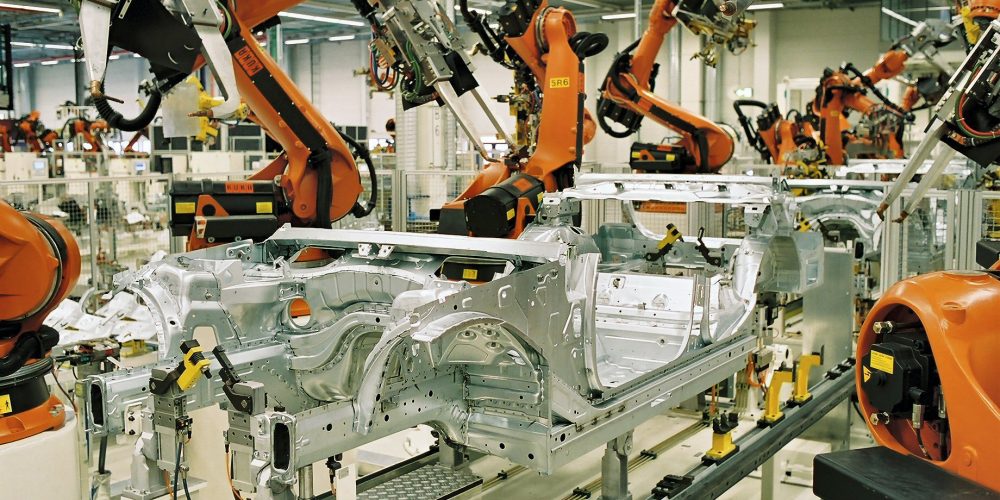

Managing More Complicated Tasks
The general factory robot regulates movements around 0.1 mm. However, a few contemporary factory robots come with repetitive precision of 0.02 mm. In the future, people are expecting to develop robots with a higher level of precision. Such capability could make it possible for factory robots to handle more delicate operations like threading needles or application in the assemblage of high-tech electronic devices.
The development of technologies, like Robotic Processing Automation (RPA), is expected to make this transformation possible and enhance efficiency in the manufacturing industry.
Cooperating With Human Workers
Going forward, manufacturing companies will be able to choose whether to automate their tasks completely with a production robot or use a hybrid system. In this system, robots work in harmony with humans. This will likely be possible given the development of advanced safety systems.
Robotics In Manufacturing: Key Part Of Flexible Manufacturing
The automotive industry is a good example of robotic flexibility. Nevertheless, many industries and processes replicate a lot of lessons garnered by vehicle manufacturers and suppliers.
Robots Are Valuable In Manufacturing Industry
There has been a lot of significant advancement in robotic manufacturing systems after its initial launch in the 60s. Although the automotive industry is using factory robots, robot manufacturing is beginning to escalate into other industries.
Production robots are becoming smarter and more flexible by day. The future is a place where many human tasks can be efficiently taken over by robots.
Robots in manufacturing will be especially important. This includes production processes that needs very thorough handling such as in pharmaceutical or assembling of medical devices. Robots work tirelessly. They don’t get sick or injured. These features make robot manufacturing very valuable in the manufacturing industry.







